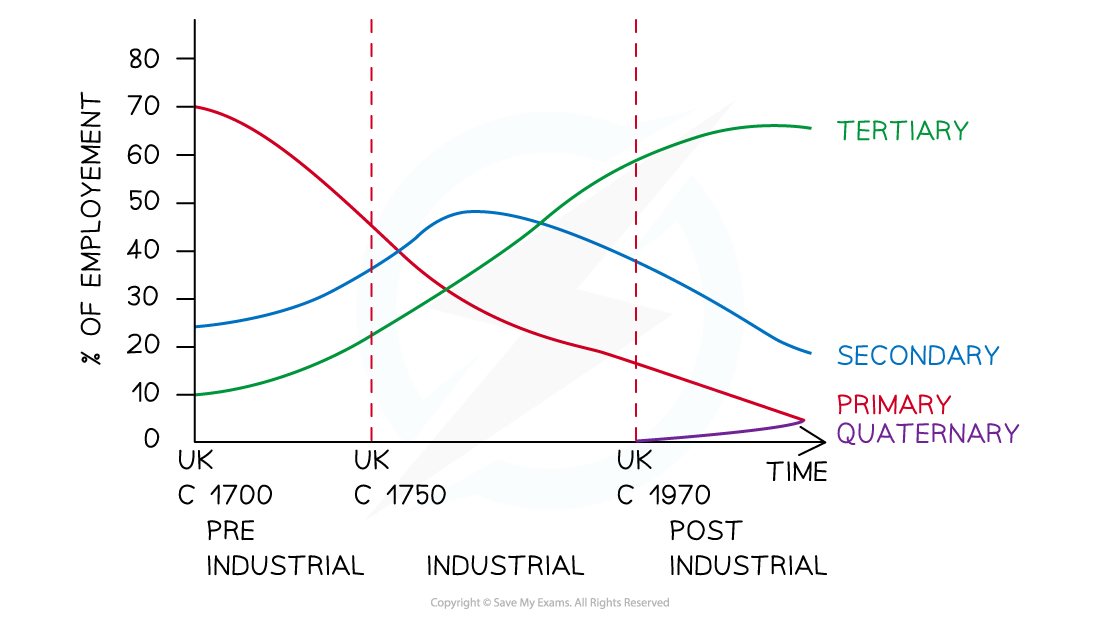Causes of Economic Change
- Industrial structure refers to the percentage of employment in the primary, secondary, tertiary and quaternary sectors of the industry within an economy
- An economic activity is the production, purchase or selling of goods and services
- Economic activities can be grouped into four sectors:
- Primary: mining, fishing, farming etc.
- Secondary: factory workers, clothing, steel production etc.
- Tertiary: nurses, lawyers, teachers, shop assistants, chefs
- Quaternary: hi-tech scientists, research and development
Exam Tip
Remember the economic sectors can also be used to group employment types. For example, a farmer is employed in the primary sector whereas a teacher is employed in the tertiary sector.
- The UK’s economy has changed over time and place and the most significant changes came during the industrial revolution between 1750-1900
- The changes can be divided into 3 stages:
- Pre-industrial stage: most people worked in the primary sector such as farming or mining
- Industrial stage: more people moved into the secondary sector of manufacturing
- Post-industrial stage: emphasis is on service based tertiary sector and quaternary sectors of research and ICT

Clarke-Fisher-model showing UK economic change over time
- There are 3 main causes of economic change in the UK:
- De-industrialisation saw the decline in the UKs traditional manufacturing industries and growth in the tertiary and quaternary sectors due to:
- Global shift of manufacturing to NEEs where labour costs are cheaper, longer working hours and trade unions have no influence
- Mechanisation reduced production costs and the need for manual labour
- Globalisation and increased world trade with cheaper imported goods; contributing further to a decline in manufacturing
- Markets have become deregulated and companies have to find ways to make a profit through change and innovation
- Service sector has grown and wages increased
- Taxes are kept low, giving people more disposable incomes; mortgages become easier to obtain and house prices increase
- However, the global financial crisis of 2008 hit, causing the UK to enter a period of recession
- Many UK banks were bailed out using government money and the national debt grew
- Government policy forced changes on banks and how they lent money in the future
- Government policy changes:
- 1945 -1979 state-run industries were created after WWII to boost the economy, with the government supporting many unprofitable industries
- 1973 the UK joined the European Union (called the 'common market' at that time)
- 1979 - 2010 with political change came privatisation and many of the state-run businesses were either sold or closed down and this is when UK jobs first began to go overseas
- 2010 - 2016 a ‘rebalancing’ of the economy through austerity measures, inward investments and improvements to infrastructure
- 2016 onwards - Brexit, although it is unknown at present what the full impact of the UK's decision to pull out of the EU will be, although Nissan announced:
- De-industrialisation saw the decline in the UKs traditional manufacturing industries and growth in the tertiary and quaternary sectors due to:
“Nissan warns Sunderland factory ‘unsustainable’ after Brexit without EU trade deal. If no trade deal is reached, cars made in the UK and exported to the EU would be subject to a 10 percent tariff “ BBC News 11 December 2020





